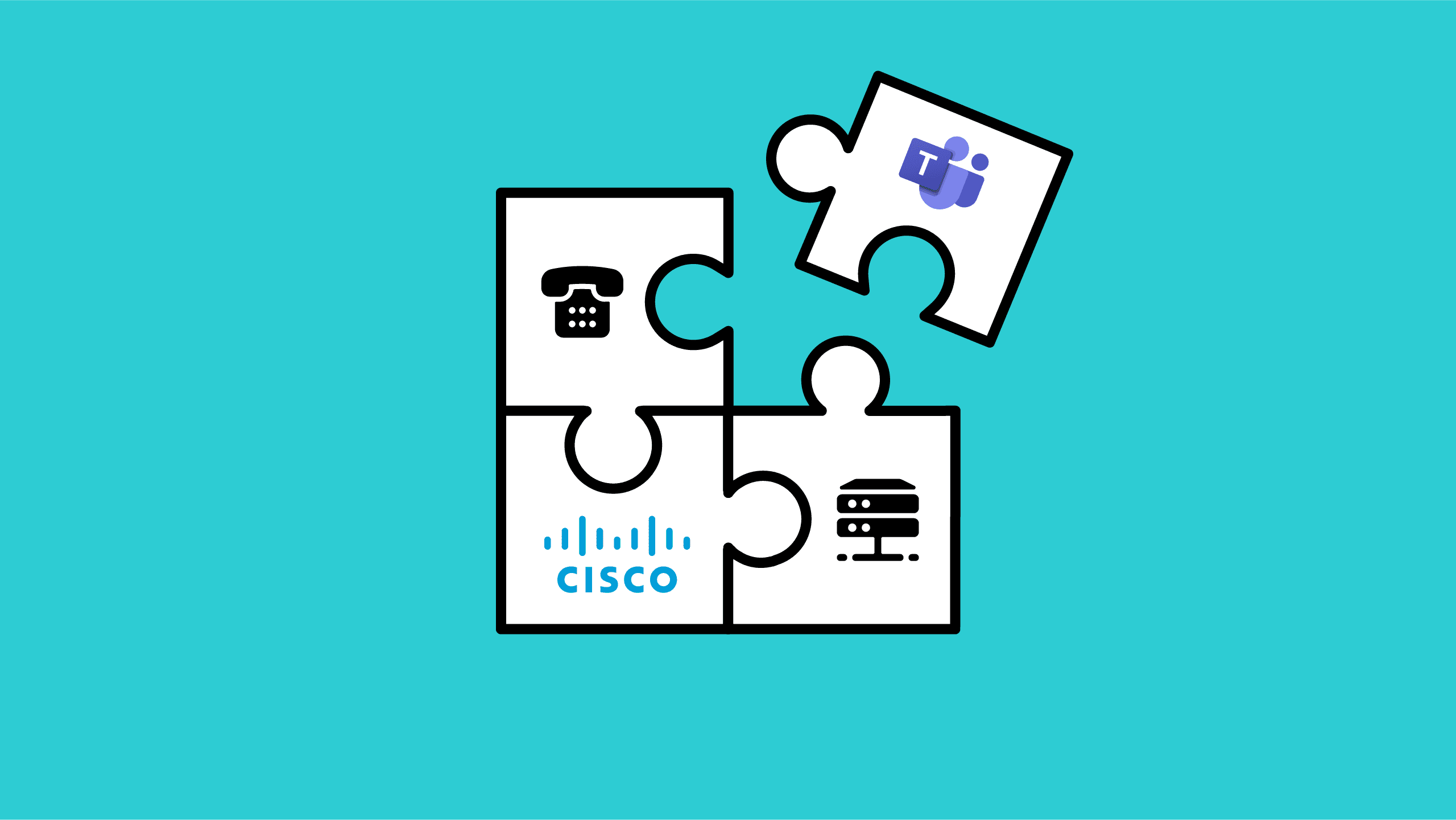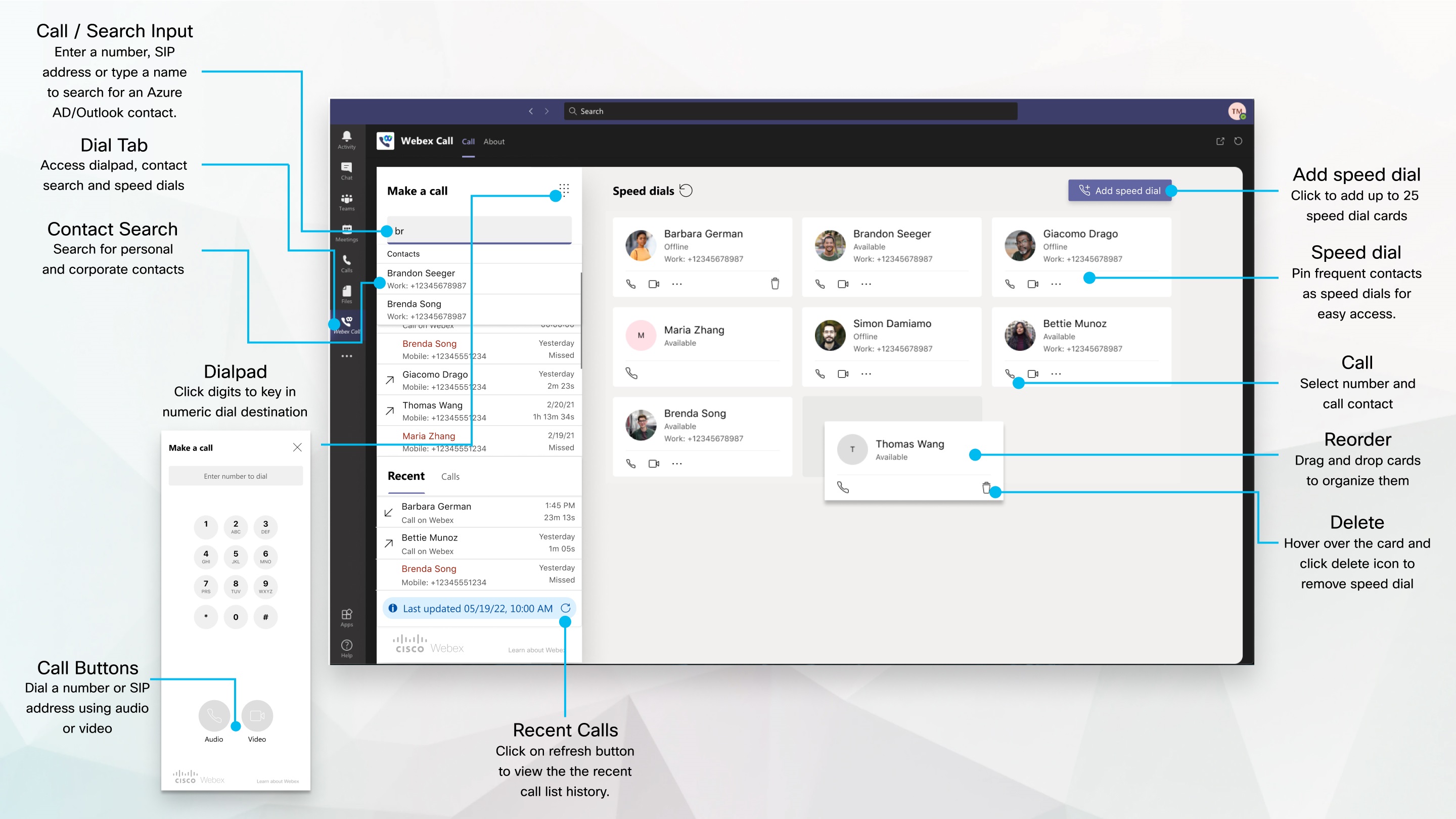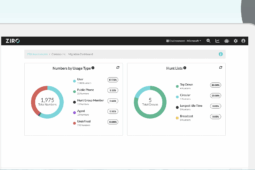
In this article, I’ll walk you through the basics of a Microsoft Teams integration with Cisco Call Manager, Webex Calling, and Jabber. We’ve included step-by-step instructions for each of these tactics to save you frustration and time.
TL;DR
- The Call App for Microsoft Teams is a straightforward way to connect Webex calling functionality with Teams.
- The Webex and Jabber plug-ins allow for the integration of a Cisco softphone within Microsoft Teams, allowing for voice and video calls in the Teams client.
- Enabling Direct Routing allows your organization to keep your existing phone numbers and your agreement with your current carrier.
- ZIRO can help you set up and support more advanced Microsoft Teams Cisco integration tactics and features.
How to Set Up a Microsoft Teams Integration with Cisco Call Manager, Webex Calling, and Jabber
Connect your Microsoft Teams account holders with Cisco Webex calling features
By using the Call App for Microsoft Teams, you can launch calls through Webex technology, even when you click the call button in Teams.
To access this functionality, follow these steps:
- Verify users have accounts activated in the Webex Control Hub
- Ensure users are registered to the Cisco Webex Calling or Unified Communications Manager
- Make sure users have the Webex app
- Ensure you have Administrator privileges for Microsoft Teams
- Update phone numbers for users in the Azure Active Directory
Go to the Microsoft Teams Admin Center and click Teams Apps followed by Manage Apps. Then, search for the Webex Call function and toggle the app status to allowed. Don’t forget to update your permission policies to allow third-party apps too.
In the Teams apps menu, click on Setup policies and add the Cisco Webex Call app to your Microsoft setup. Users will now be able to click Webex Call at the bottom of a window when chatting in Microsoft Teams.
Alternatively, employees can also click on the Webex Call function on the left-hand menu bar and just dial the number of the person they want to call through Webex.
While this is a straightforward way to connect Webex calling functionality with Teams, this only works with VoIP calling strategies. You can’t connect your chat messages or file sharing using this method.
And unfortunately, this technique doesn’t work in reverse – you can’t add Microsoft Calling to Webex.

Add the Webex and Jabber Plug-In Applications
If you use Cisco and Microsoft collaboration tools, you should be using Cisco’s two plug-in applications that integrate Microsoft Teams with Cisco Webex Calling, as well as Cisco Jabber for on-premises Cisco Unified Communications Manager (CUCM) deployments.
These plug-ins allow for the integration of a Cisco softphone—Jabber or Webex Teams Calling—within the Microsoft Teams client, enabling end-users to escalate chat conversations into voice and video calls or make/receive new calls right from their Microsoft Teams client.
How to initiate a new call
Before you begin: Make sure your administrator or your team space owner has installed the Webex or Jabber app in Microsoft Teams. If it is installed, you’ll see the Webex Call or Jabber icon in the app bar

Image Source: Webex Help Center

Image Source: Webex Help Center
To initiate a new call from a chat:
- Click Webex Call or Jabber at the bottom of the window while you are chatting with someone.
- Select the default number under the contact to get more calling options in the drop-down menu.
- Click Call
Of course, you can also initiate a new call with the dial pad from the Microsoft Teams client (Jabber plug-in only).
Enable Direct Routing to Get the Full ROI of your Teams Investment
Have you already made the jump to Microsoft Teams but need to keep the functionality of your existing phone system? The last thing you want to do is bounce back and forth between Teams for internal calls and your old phone system for external calls.
This is where Direct Routing comes into play.
Enabling Direct Routing allows your organization to keep your existing phone numbers and whatever agreement you have with your current carrier. In most cases, it keeps your overall dial-tone costs as competitive as possible, too. You can maintain maximum control of your dial plan with the least amount of disruption.
If you want to enable users for Direct Routing on your own, you can reference this guide from Microsoft for step-by-step instructions.
However, if you have a large, complex configuration, this will be time-consuming and frustrating to do. A trusted provider like ZIRO can work with you or do it all for you to make setup easy and cost effective.
Let us do the heavy lifting for you. ZIRO’s UC experts can provide the air cover you need to:
- Know exactly what you have,
- Know what your team uses,
- And understand your entire environment.
Make confident decisions. Try our free CUCM to Teams Assessment or contact us. We love a good techy conversation.
–
Editor’s note: This article was originally published on June 9, 2020.
Ready to take your unified communications from headache to hassle-free?
No throwing darts at proposals or contracts. No battling through the back-end. No nonsense, no run-around.



